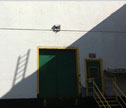We've come a long way in a decade.
As a rule, we're operating more safely and smarter, and we have some encouraging data to support this. We know, for example, the number of claims from falls involving CNA-insured roofing contractors has declined from 262 in 2002 to 63 in 2011. That's a huge improvement, which, by the way, was occurring long before the Occupational Safety and Health Administration decided to change its fall-protection rules. Sixty-three falls still are way too many, but we're learning more about the nature of the falls, most notably that falls from ladders are more of a problem than we might have thought.
There is a similar trend with fire-related claims thanks in no small measure to the CERTA training program that now has seen about 20,000 applicators go through full-day training courses.
The picture, of course, is not all rosy. Injuries related to material handling continue to be a problem. Traffic accidents have ticked up, with some serious claims stemming from distracted drivers sending text messages. And our industry's demographics don't help; older roofing workers are more likely to be injured on the job than younger ones—and we now have more older workers than ever.
We have learned some important lessons during the past decade. We know, for example, the most effective safety programs are those where there is passionate buy-in from top management. When accidents and injuries are unacceptable, there is change in behavior. We know training matters—a lot—and there is a direct correlation between effective return-to-work programs and reduced losses. We know foremen have a lot to do with determining the safety of their crews. And we know a significant portion of accidents and injuries involve workers with less than one year on the job, so experience matters, too.
Still, we can—and must—do better. NRCA recently has released some valuable new products—with others in development—that can help contribute to a safer workplace. These include a new safety manual, newly revised NRCA Pocket Guide to Safety, a new fall-protection training program and (still in development) a comprehensive program addressing material handling.
Although valuable, these tools are only truly effective when everyone in a company uses them. How about zero falls in 2013?
Bill Good is NRCA's executive vice president.



